Your Guide to Customer Needs and Solutions


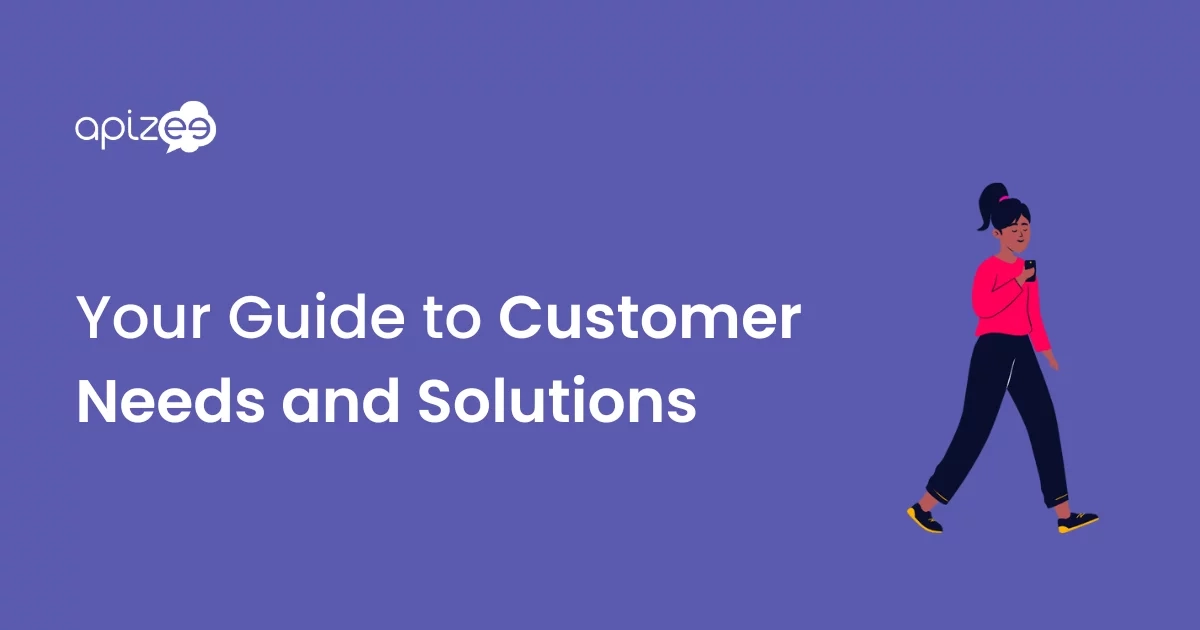
Companies have hoards of data, spend hours in persona workshops, and make endless optimizations to the customer experience; still, customer needs are frequently missed.
You only need to spend a few minutes on review websites and publications like the U.S.’s National Customer Rage Survey to see that most companies need to rethink their approaches to customer experience.
So, how can businesses of any size get in front of customer needs and satisfy them? Start by understanding what “needs” are and then ask the right questions.
In this article, you’ll learn more about customer needs and why they’re so important to your business. You’ll also learn different types of customer needs and solutions your team can provide to meet them.
Customer needs are the psychological and practical motivations for buying a product or service. These needs are the ultimate drivers of whether a customer will choose to work with your business and stay loyal.
Businesses today recognize the importance of keeping the customer happy to stay in business—and thrive.
However, many companies have been misled by data and insights.
In an attempt to draw conclusions and identify patterns, we’ve rushed to create fictional target customers with shallow characteristics that have little-to-nothing to do with why they need your product.
According to researcher Clayton M. Christensen and his co-authors, customers don’t merely purchase a product or a service. Instead it’s better to think of it as “hiring” your product or service to do a job based on their specific needs.
This way of thinking about customer needs has been popularized into the “jobs-to-be-done” theory (JTBD).
If the product does the job well, the customer may hire the product again or even refer it to someone they know with the same task. But if not, they may “fire” the product and look for a competitor or alternative solution.
Consider the last time you purchased a pen. You might have selected the pen based on its features: it glides across the paper nicely, it has black ink, and it fits well in your hand. But the “need” for the pen is more specific: you need the pen to write a birthday card, for example. This is your JTBD.
Businesses must create products that appeal to customers in terms of functionality, but they primarily need to make sure your product or service can get the job done. A pen with invisible ink, one that works intermittently, or one you have to wait 5-10 business days for is not going to please customers.
To meet modern day customer needs, you need to know what jobs your customer is trying to achieve and the circumstances surrounding this task.
This is the foundation for innovation and stand-out customer service.
For instance, customers worried about climate change and preserving the natural environment might have the following JTBD:
They’re not just an outdoorsy male or female aged 25-45 with a specific amount of disposable income, nor are they just “buying clothes.” They’re trying to achieve a variety of quite important, meaningful tasks.
Outdoor clothing retailer Patagonia was certainly aware of this when it created its “Worn Wear” initiative.
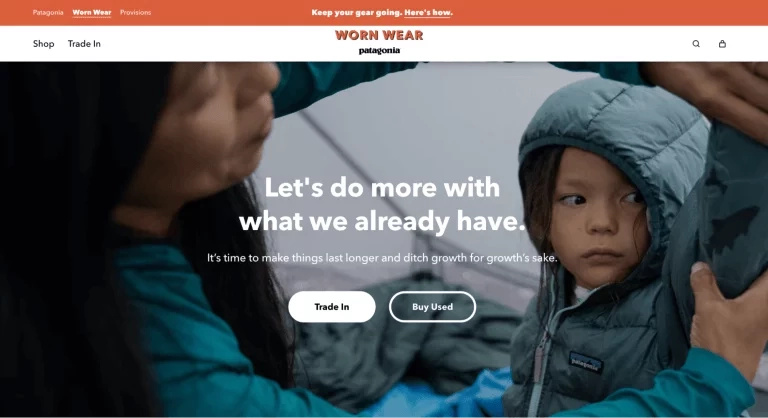
Customers can trade in their old clothing for store credit or buy used Patagonia items to create a more circular clothing industry. This may seem counterintuitive for a clothing retailer whose job it is to sell more clothes.
In fact, the more Patagonia rejects modern consumerism, the more its customers love the brand (and continue to buy).
Focus on the needs and wants of your customers when developing your strategy. Frame your messaging accordingly so that each time a customer “hires” your product, their needs are being met.
Not long ago, a business could survive simply with a good product and a bit of awareness. Now, customers expect the entire product experience to impress them.
Put another way: framing customer needs according to their JTBD, and then shaping your offering to meet those needs, is now a requirement for competitive success.
And it’s not going away anytime soon. Salesforce found that customer attitudes toward companies meeting their needs is growing. Its report revealed 73% of customers expect companies to understand their needs, up from 66% in 2020.
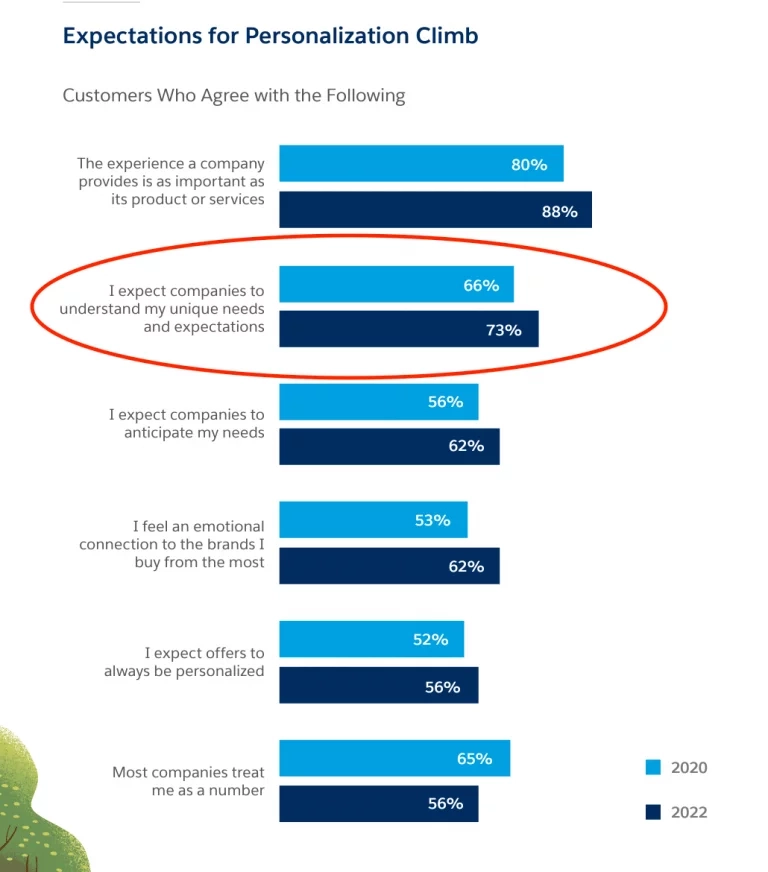
Understanding JTBD allows you to anticipate needs ahead of issues, so you can provide faster solutions and better products. Further, more obvious benefits of understanding customer needs include:
We all have different types of needs, ranging from big (get health on track) to small (keep away the hunger pangs with a snack). They can also be extrinsically motivated (financial gain) or intrinsically motivated (avoid boredom while waiting in line).
Customers may purchase your product or service, but what they really want and need is the result. Keep in mind the common sales expression:
“No one wants a drill. What they want is a hole.”
Taking it a step further and connecting to the social-emotional side: it’s not the hole they want; it’s the satisfaction of a hung shelf.
As Christensen points out, “Jobs aren’t just about function—they have powerful social and emotional dimensions.”
With that in mind, we’ve grouped some of the more common types of customer needs and how to answer them. We’ll then explain how to find out what your customer needs are.
Full inboxes. A million-item-long to-do list. Endless meetings. Your customers have a lot to think about, and your product or service shouldn’t add to that.
Customers want control over their day-to-day functions, especially in busy sectors like B2B. Make sure your product helps them achieve their task in a streamlined and helpful way—as opposed to adding more stress.
Likewise, people want products to be convenient. A coffee ordered and paid for ahead of time via an app helps businesspeople arrive at work on time (like Starbucks or Costa Coffee). An integration that streamlines your inbox into useful categories saves hours of time across the week and prevents important messages from being missed (such as Basecamp’s Hey).
We’ve grouped convenience and control together because the solutions are often the same. Begin by finding out what obstacles your customers experience when purchasing and using your product.
Survey customers after checkout and ask what might have prevented them from purchasing. Conduct interviews with customers at varying intervals (immediately after, a few months later, one year later, etc.) to learn how they’re getting on with their new purchase.
Where possible, let your customers call the shots. For example:
Here’s an example of how a tennis membership helps its members feel in control of a procedure change:
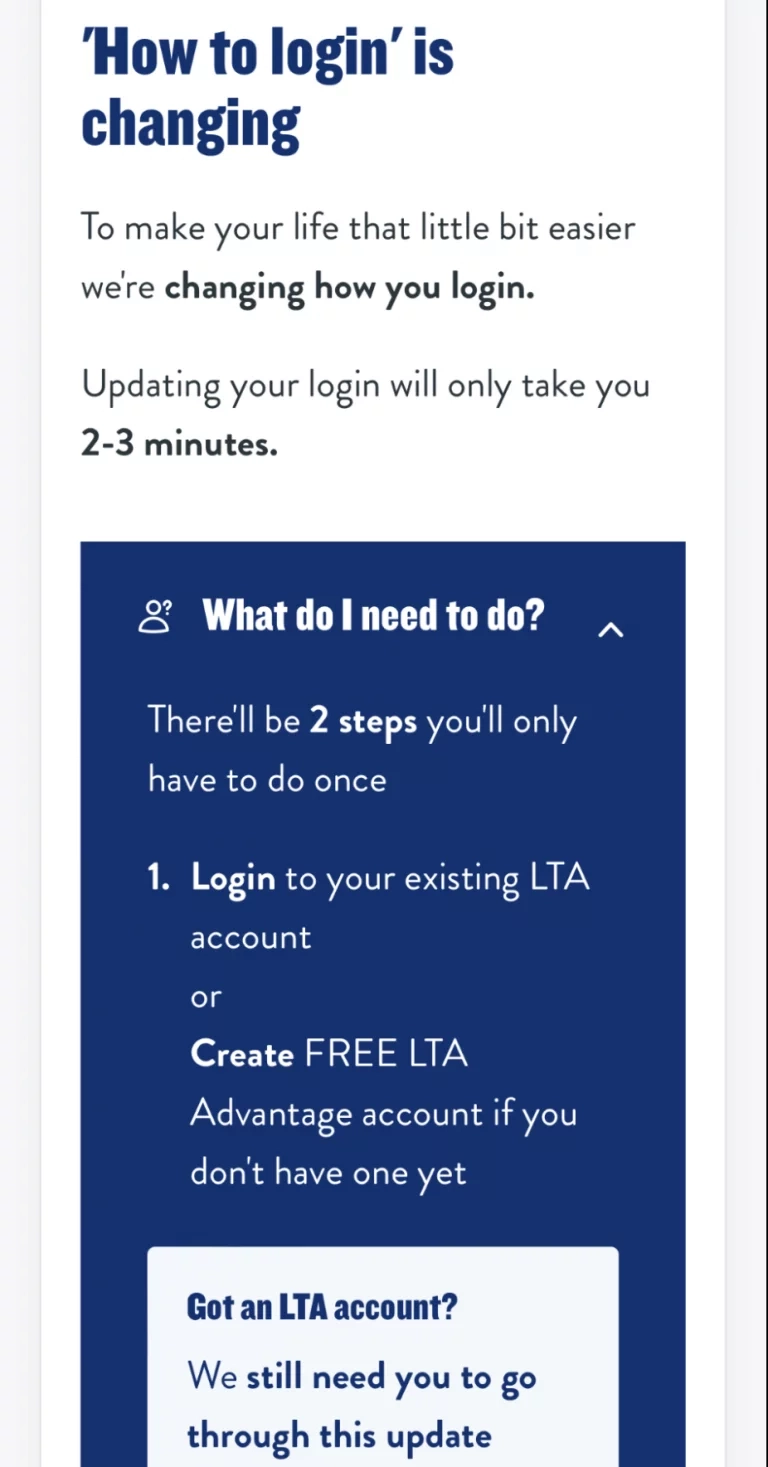
Make it easy for your customers to do business with you and help them feel in control of their journey. But don’t overdo it; decision fatigue is real.
Give customers just enough control and convenience to feel happy with their experience, then take the rest of the work to achieve their task off their plate.
Customers want understanding from companies, And in many cases, they’re not getting it.
The National Customer Rage Survey in the U.S. found that customers are experiencing more product problems than ever before, and they feel frustrated when they can’t reach your business to handle the issue quickly.
Further, 96% of consumers across the U.S. and U.K. state that empathy is important in customer service interactions. So, how can businesses meet customers eye-to-eye?
There are two ways companies can level-up their empathy: shaping your offering according to their needs in the first place, and empathizing when providing support.
Set your product, marketing, and sales teams up for success by asking your customers the right questions.
Ask customers questions like:
Christensen also recommends drawing up a timeline of how they got to this point (e.g., immediately post-purchase) to provide insight into decision-making. This timeline can reveal critical information, such as obstacles to purchasing, that they may not think of when taking a survey.
To empathize more directly with customers, train employees on how to approach situations with empathy. Some tips include:
Another great solution is to incorporate video chat into your customer service capabilities. Many customers are met with AI, which is really more of a solution for businesses than for customers.
Deploying AI to help your customers help themselves can be useful, such as answering frequently asked questions. But overreliance or poorly programmed bots can frustrate customers and drive people crazy.
If your customers need empathy from your business in order to achieve their task, make sure you have a good one-on-one service that they can access quickly. With a tool like Apizee, customer service agents can seamlessly share a video link with the customer so your team can speak with them face-to-face, providing that ever-important human touch.
Information needs to come in many forms. Most notably, they need information about your product to complete the task they set out to accomplish in the first place. They also need information to feel like they’re making a good decision trusting your business (such as secure payment processing and happy past customers).
Make sure the information you provide across all of your teams is 100% consistent and that the same things your sales team is promising, your service team is fulfilling.
Salesforce found that 85% of customers expect consistent interactions across departments, but 60% often feel like they’re communicating with totally separate departments rather than a unified company.
To solve the product information issue, create educational content that helps your target audience make an informed purchase decision.
There are several types of educational content you can create for every stage of the funnel, to inform your potential customers about your business’s solution all the way to informing existing customers about even more product features they can access.
Various types of educational outlets include:
Ikea’s educational YouTube content is an excellent example of this.

Ikea provides knowledge and inspiration on a range of jobs their customers are trying to solve, as well as assembly videos.
You can also incorporate an automated FAQ solution like Smart Tribune, which is specifically designed to reduce customer service requests and improve customer experience.
Every customer wants a fair price for a product or service that will help them accomplish their job. That doesn’t mean the lowest price; people want value for money.
Research has shown time and again that, especially among Millennials and Gen Z, people will pay more for items that meet particular needs. Including:
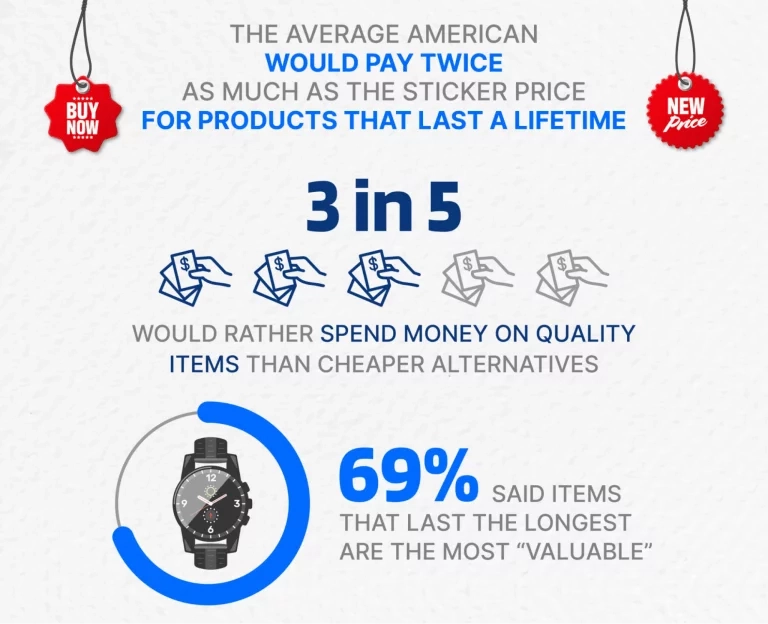
There are many ways to deliver value and maintain a competitive advantage that don’t mean offering lower prices than your competitors (undercutting the competition is a race to the bottom).
Consider whether you’re offering value for money by evaluating your business against the four Es:
Customers want the companies they’re working with to be transparent, which is key in garnering trust.
Customers want to accomplish their jobs, but they won’t risk important things like data security and unsecured payments to do so.
Make it your company’s mission to be transparent about things. Let customers know how your company manages their data, be upfront with breaches, share when there are outages, etc. Fail to do so and your customers will have a hard time trusting you.
Offering video assistance is a great way to establish transparency and positively transform your customer experience. When your customers have an issue, they’ll be able to interact live with a real person on the other end. This builds trust while also immediately fulfilling their JTBD wants and needs.
Transparency can also be incorporated into how the pricing and distribution of materials is presented to the public. Swiss clothing brand Avani utilizes radical openness to provide real insights for their customers.
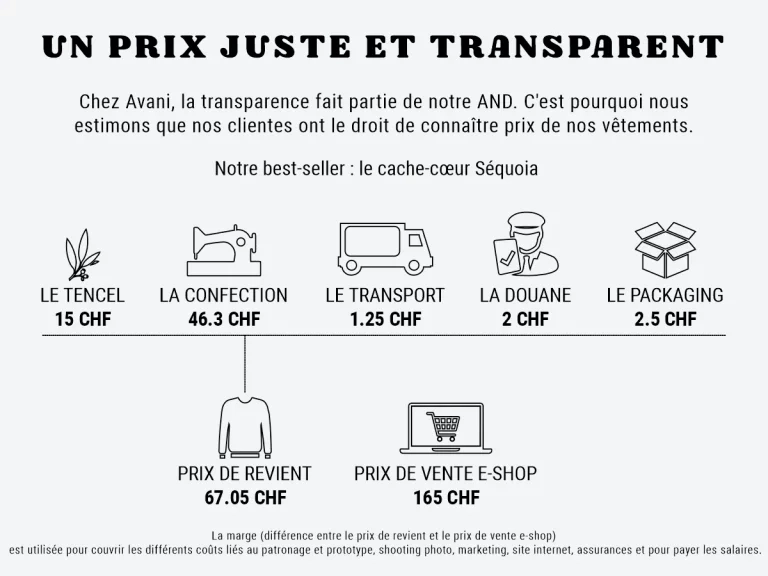
Avani fulfills their customers’ need “to make sustainable fashion simply a pleasure.”
We’ve covered customer needs and solutions your business and product needs to provide—but how can you identify which of those types of needs pertain to your specific customers? Let’s cover seven strategies—and tools that can help—for your team to identify customer needs.
Run customer surveys to get valuable insights directly from your customers. Software like Refiner and Typeform can help you create quick forms and surveys that you can embed in areas on your website for customers to fill out right after completing a transaction or communicating with your support team.
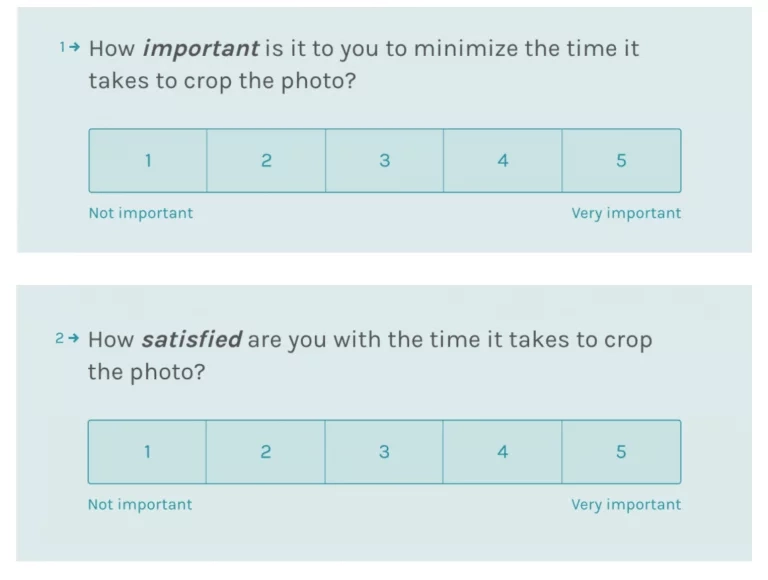
Use these surveys to ask how their experience went so you can determine if there are any customer needs you’re not meeting.
Put yourself in their shoes by asking questions related to tasks that they want to avoid. Be open to learning more about them by inquirying how they’ve used the product and for what uses, even if the uses happen to be different than those you’ve designed for or expected.
Map the results into a satisfaction-importance graph, like this:
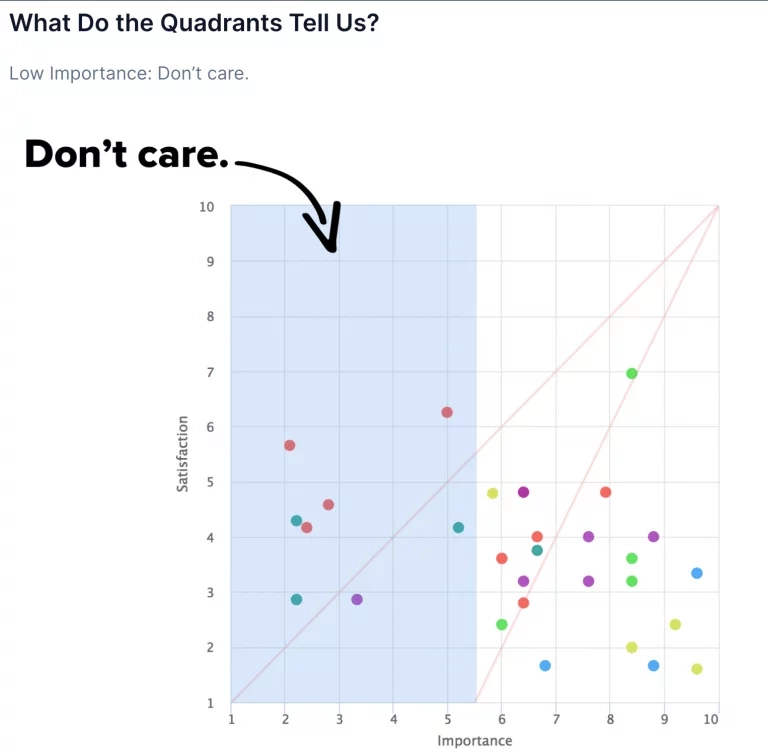
Features that are high on satisfaction and importance are critical (as indicated by the green dot in the image above).
Features that are extremely important but are not so satisfying are where you’ll want to prioritize your focus to meet customer needs (the lower right of the quadrant).
If you have a lot to find out and a survey doesn’t seem realistic to get the qualitative answers you need, try focus groups.
Focus groups are typically a part of a major market research project. With these, you can conduct in-person customer interviews to get in-depth feedback about a customer’s sales, purchasing, or customer service experience with your business.
A moderator facilitates these focus groups to ensure active participation from all members so your company can get the full picture of each participant’s experience. This data is great for new product development and ensuring you’re actively providing solutions for all customer needs.
You can make the process of acquiring a focus group quite simple by employing companies like UserTesting and Qualtrics. User testing companies can help you gather in-depth customer feedback from people who would likely buy your product.
You might not need a new survey or focus group. You can easily identify customer needs with the customer data you already have, so long as you use it correctly.
Customers provide you with tons of data every day—identity data, behavioral data, etc. However, be careful not to focus too much on drawing correlations. Remember: “Correlation does not imply causation.”
Just because you’ve launched a product feature and then seen sales go up doesn’t necessarily mean it’s down to that feature. This is how companies get easily led astray by focusing too hard on the data in their dashboards and not enough on the why behind it (solved by asking the customer!).
Instead, use data as a resource to supplement your main focus: your customers’ wants and needs for accomplishing their task (i.e. the JBTD).
CRMs like Genesys and Salesforce can be great tools to use to house all internal customer data. From there, you can work out which features or services to ask your customers about.
Knowing what stage of the customer journey a person is in can make it easier to meet their needs. Map out your customer journey so you get a clear picture of the different touchpoints between your customers and your business.
Take a look at this customer journey map to get an idea of all the potential touchpoints your customers might have with your business.
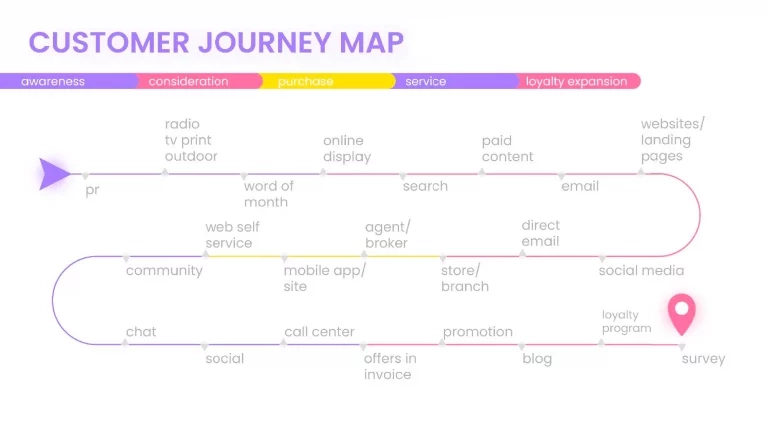
Customers have different needs according to the stage they’re in. Those in the awareness stage might have needs surrounding options and information, while those in the purchase stage might have needs focused more on price and functionality.
Take advantage of tools like Smaply and UXPressia to create customer journey maps with the focus of locating opportunities to meet customer needs.
Analyze competitors, their messaging, and their support options to see how they might be meeting customer needs. Better yet, take a look at competitor reviews to see where they’re struggling or failing so that you can better meet customer needs.
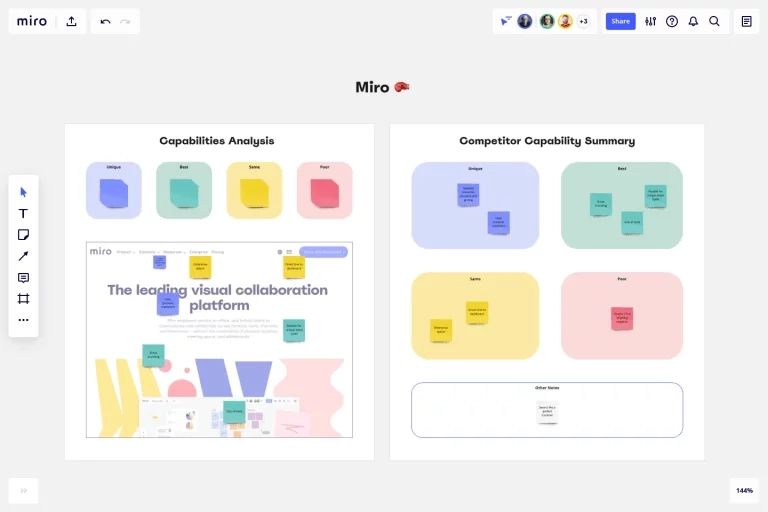
Design a workshopping board (or use a template like the one above) on a platform like Miro or use dedicated tools like Semrush’s website analysis suite and explore the results. Tools like these can help you put together a comprehensive competitor assessment.
Locate the precise customer wants and needs that your competitors are catering to (or better yet, missing out on) so that you can concentrate on fulfilling them.
Use social listening tools to gather insight and sentiments from online conversations. Brandwatch and Talkwalker are two tools that can help you monitor conversations, customer sentiment, media mentions, and more.
See what potential customers are saying about your industry or product to get a better understanding of what they’re looking for from companies like yours.
It’s a rare opportunity to hear what customers seek to accomplish in particular circumstances, all with complete candor and free from the outside influence that’s inherent in surveys or focus groups.
Discover what keywords people are typing in to find solutions like your business. If you run a company that specializes in online therapy, you might find searches like, “convenient therapy options” or “online therapist,” helping you cater your messaging towards customer needs like convenience and functionality.
Ahrefs is a top tool for conducting keyword research for search engines. WordStream is another useful tool for discovering keywords surrounding your industry.
Perform manual searches in Google to uncover “People also ask” responses and other related results. It’s a great way to spend some time traversing the customer journey, firsthand.
You can even take advantage of forums like Quora and Reddit to see what types of questions are being asked and what types of posts are being made about products and companies like yours.
Understand and anticipe your customer needs so that you can provide the best solutions. This awareness is crucial for improving customer satisfaction and retention.
Learn how Apizee can help improve your customer support solutions, meet needs faster, and generate more loyal customers.
Claire Boscq, CX Activator and founder of JCX Alliance, shares her unique approach to wellbeing-led customer experience. Discover her vision in this new Apizee CX Voices interview.
[CX Industry Voices] Interview with Claire Boscq
25 Jun 2025
Call Centre Helper’s Xander Freeman spoke to Charles Kergaravat, CMO at Apizee, about the rise of video chat in customer service.
The rise of Video Chat in customer service
20 Jun 2025
Simon Macklin from Salesforce, explains how AI and human empathy combine to shape the future of CX. Discover insights in the latest Apizee CX Voices interview.
[CX Industry Voices] Interview with Simon Macklin
19 Jun 2025
Interested in our solutions?